
Hair Loss is Normal
In fact, according to the American Academy of Dermatology, hair loss of between 50 to 100 strands of hair per day is typical. That might seem like a lot, but considering that you have over 100,000 strands of hair on your head, it may not be immediately noticeable.
If you lose more than this amount each day—or if you’re starting to notice obvious signs of hair loss—it’s possible that your hair may be thinning. Thinning hair doesn’t always mean you’re on the way to baldness, but it can cause sparse areas on the scalp.
Hair Loss – Clinical Background
Hair loss is a widely common condition which affects both males and females. In the U.S and Canada, about 60% of men experience ‘Male-pattern baldness’, where up to 40% of women over 50 are affected by ‘Female-pattern baldness’. While hair loss may seem like an aesthetic issue, it is often accompanied by a significant negative psychological impact.
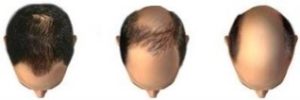 Male Pattern Baldness
Male Pattern Baldness
Female Pattern Baldness
The Norwood scale (or Hamilton-Norwood scale) is the leading classification system used to measure the extent of male pattern baldness. Men typically lose their hair in one of several common patterns over the course of many decades. The Norwood scale provides easy-to-reference images that indicate different stages of balding.
There are several other classification scales used by doctors, researchers, and hair transplant surgeons. Some classification scales include both sexes or focus on female pattern baldness.
The Norwood scale, however, is the measurement that’s most commonly used by clinicians when discussing male pattern baldness. It provides a reference point to diagnose the extent of baldness, discuss treatment options, and measure the effectiveness of treatment.
The Norwood scale has seven stages. Each stage measures the severity and pattern of hair loss.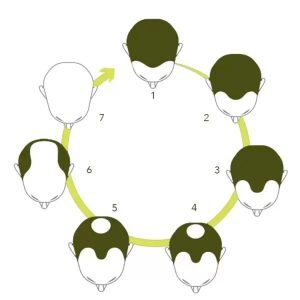
- Stage 1. No significant hair loss or recession of the hairline.
- Stage 2. There is a slight recession of the hairline around the temples. This is also known as an adult or mature hairline.
- Stage 3. The first signs of clinically significant balding appear. The hairline becomes deeply recessed at both temples, resembling an M, U, or V shape. The recessed spots are completely bare or sparsely covered in hair.
- Stage 3 vertex. The hairline stays at stage 2, but there is significant hair loss on the top of the scalp (the vertex).
- Stage 4. The hairline recession is more severe than in stage 2, and there is sparse hair or no hair on the vertex. The two areas of hair loss are separated by a band of hair that connects to the hair remaining on the sides of the scalp.
- Stage 5. The two areas of hair loss are larger than in stage 4. They are still separated, but the band of hair between them is narrower and sparser.
- Stage 6. The balding areas at the temples join with the balding area at the vertex. The band of hair across the top of the head is gone or sparse.
- Stage 7. The most severe stage of hair loss, only a band of hair going around the sides of the head remains. This hair is usually not dense and may be fine.
What causes hair loss or thinning hair?
Hair loss is a natural, daily occurrence. On average, 100 hairs are lost each day. When hair loss significantly exceeds growth, baldness occurs. In 95% of men, hair loss is an inherited trait, caused by genetics. Until recently, it was believed hair loss in men was inherited only from the mother’s father. It is now understood that baldness genes are passed down from both sides of the family. People are born with a predetermined number of hair follicles; the number never changes. While a child is in the womb, hair follicles are genetically coded. If the genes responsible for hair loss are present during this time, hair follicles are made sensitive to the hormone Dihydrotestosterone (DHT). For information on hair loss due to chemotherapy see our article Accelerating Hair Growth After Chemotherapy
Miniaturization Caused by DHT
As men approach adulthood, the amount of DHT in the body increases, causing the follicles to cease producing hair. This process is known as androgenetic alopecia, or male pattern baldness. In androgenetic alopecia, hair follicles that are producing healthy hairs begin to produce shorter, thinner, more brittle hairs. Eventually, these follicles produce only fine, almost invisible, short hairs or they stop completely. This process is called “miniaturization.” (To find out more about other causes of hair loss, such as those listed below contact us.)
• Diet
• Medications
• Postpartum Changes
• Menopausal Changes
• Excessive Chemical Processing
• Stress
Non-Surgical Hair Loss Treatment Options
At London Laser we offer several programs , all using methods clinically proven to have positive effects for those who are follicularly challenged. There is no such thing as a one-size-fits-all hair loss solution. Similarly, there are not any miracle cures. Combining clinically proven treatments gives the best chance of a positive outcome. While the results will not appear overnight, they will come with time. Remember, this is just the beginning. It may take a few months to see results, and this is true for almost any option you choose.
Our Treatments
Keravive by Hydrafacial
Healthy Hair Starts with a Healthy Scalp
London Laser offers a multitude of options to promote better hair health from the inside out 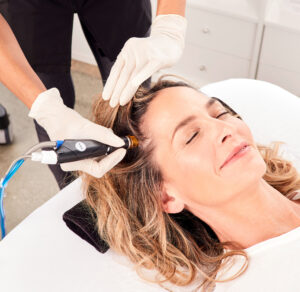 and our Elevated Keravive™ scalp treatment is one of them. The hair follicle and well-functioning scalp both play major roles in hair health, reflecting through shine, growth, and fullness. Read more about our Keravive program
and our Elevated Keravive™ scalp treatment is one of them. The hair follicle and well-functioning scalp both play major roles in hair health, reflecting through shine, growth, and fullness. Read more about our Keravive program
Laser Hair Therapy
Laser Hair Therapy is a non-surgical scientific approach to treating hair loss, thinning hair, baldness and problems associated with the scalp.
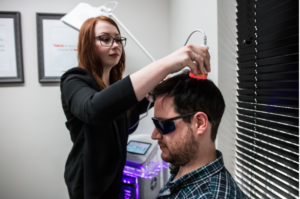
The non-surgical treatments utilize low light level laser. The treatment delivers light energy to increase the blood flow to the scalp. The laser therapy functions on the same scientific principal of that of photo biotherapy; where the laser light stimulates cell metabolism and causes damaged cells to be repaired. Read more about our Laser Hair Regrowth Program
CIT(Collagen Induction Treatment) by Dermastamp
Hair & Scalp Therapy
A powerful combined in-clinic/at home treatment for improving hair structure.The Xcellaris Pro Hair & Scalp treatment by Dermaroller® is designed to create the optimal conditions for 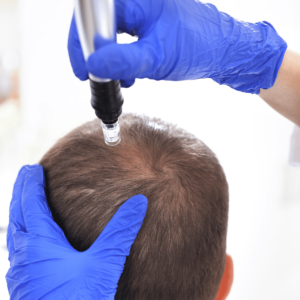 improving hair structure and reversing the process of hair loss. The eDermaStamp® creates thousands of micro-channels which significantly increase the absorption of active ingredients, ensuring maximum treatment efficacy. Read more about our CIT Hair Regrowth program
improving hair structure and reversing the process of hair loss. The eDermaStamp® creates thousands of micro-channels which significantly increase the absorption of active ingredients, ensuring maximum treatment efficacy. Read more about our CIT Hair Regrowth program
Ultimate Hair Restoration Program
We took all of our treatment options and put them together in one ultimate package to give 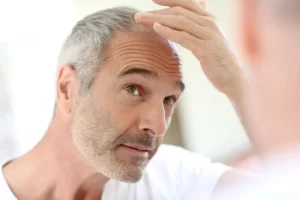 you the best chance to regain that full healthy head of hair. This treatment consists of three steps – Hydrafacial Keravive, CIT with Xcellaris Pro serums and Low Level Laser. Read more about our Ultimate Hair Regrowth Program
you the best chance to regain that full healthy head of hair. This treatment consists of three steps – Hydrafacial Keravive, CIT with Xcellaris Pro serums and Low Level Laser. Read more about our Ultimate Hair Regrowth Program
